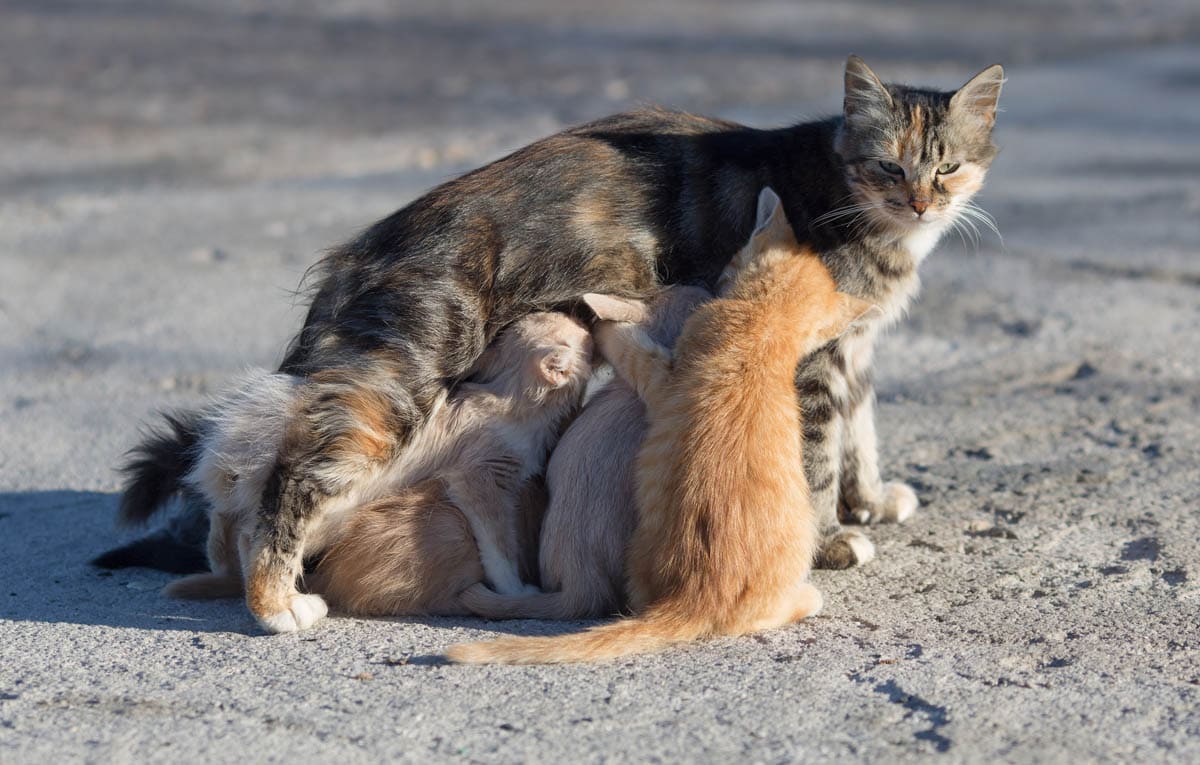August 17th is International Homeless animals day, which is held on the third Saturday of August. The day was founded by the International Society for Animal Rights (ISAR) to bring attention to the pet overpopulation epidemic.
Life on the streets is not kind; homeless animals risk disease, attacks, traffic and the elements. Animal shelters do what they can to shelter and find homes for unwanted and homeless animals, but there is never enough space. As a result, hundreds of thousands of healthy kittens, cats, puppies and dogs are euthanised every year.
Annual euthanasia statistics
- Australia – 250,000 cats and dogs per year
- United Kingdom (2010) – 156,826 entered shelters and 13.2% were euthanised
- United States – 670,000 dogs and 860,000 cats per year
What we can do to help homeless animals
All of us can do our part to help the plight of homeless animals, no matter how big or small.
Adopt don’t shop
Don’t support puppy or kitten farmers or pet shops, unless the pet shop is working with an animal shelter. Every time an animal is adopted from a shelter, a new place becomes available for a homeless animal.
Desex all pets

It is the responsibility of all of us to desex our pets to prevent more unwanted kittens. Not only does this eliminate all possibilities that a pet can breed, but there are also many health benefits.
Think carefully before adopting a pet

A new pet should be a well-thought decision that involves all family members. Cats and dogs live between 10-20 years.
Points to consider:
- Do you have the time for a pet?
- Can you afford a pet?
- Are all family members on board?
- Are you prepared to care for the pet? Walks, grooming, litter trays, feeding.
- Will you move house in the future? Will you be able to take the pet with you?
- Do you have a backup plan for when you travel?
- Do you plan to have children in the future? Will the pet still be welcome?
- Is the pet for you or a child? Are you prepared to take over the care of the animal if the child doesn’t stick to promises?
Donate time, resources or skills

There are so many ways to help animals in shelters. Help care for the animals, spend time socialising cats or walking dogs, donate goods (bedding, food, toys, equipment), offer a skill such as photographing shelter animals, picking up or dropping off animals at the veterinarian, or maintenance of the property.
Donate money
Shelters are always in desperate need of funds. It costs an enormous amount of money to run a shelter, food, medications, surgery, equipment. If you can’t directly help by adopting or donating time or resources, money is always appreciated.
Microchip cats and dogs
A microchip is the only permanent form of identification for pets. It involves the insertion of a small chip the size of a grain of rice under the skin on the back of the neck. Each microchip has a unique number that goes onto a database along with the owner’s details.
A microchip is only useful if the details are up-to-date. If you move house, change phone number or rehouse the pet, it is vital the microchip details are updated. Some databases allow you to provide a second contact, which is always recommended.
Don’t dump unwanted pets

Sometimes situations do change, and a pet owner is no longer able to care for their pet. Do the right thing and try to find a new home or ask a local shelter to help. Don’t just turf the animal out on the street.
Spread the word
Talk to people about pet overpopulation, join shelter and rescue organisations and share their updates on social media.
How to help feral cats

A feral cat is a cat who has never been domesticated, and most (not all) have little or no contact with people. These cats continue to breed, increasing in numbers. As most feral cats cannot be tamed, many charities and groups participate in trap-neuter-return (TNR) programmes to prevent further breeding. Traps are set up to catch feral cats who are desexed and then returned to the area they have been living in.
TNR is is a controversial topic in Australia due to the impact of domestic, stray and feral cats on the native wildlife population, which is beyond the scope of this article.
There are several ways to help feral cats:
- Alert TNR groups if you know of any feral cats.
- If you find a stray who is approachable, catch it and try to find a place in a shelter (preferably a no-kill one).
- Provide shelter from the elements for homeless cats in your area.
- Make sure the cats have food and fresh drinking water.
- Help your local TNR group by placing, checking and bringing trapped cats in for desexing.

